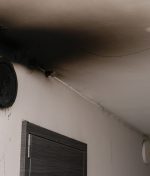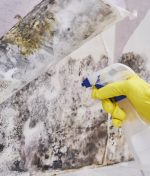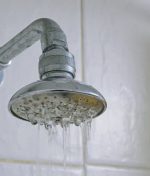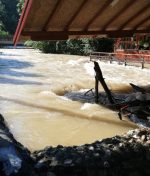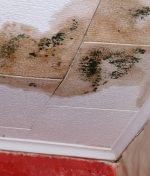How Can You Recognize Water Damage That Isn’t Visible?

- July 29, 2025
- byadmin
- Flood Restoration
Not all water damage comes with soaked carpets and dripping ceilings. In fact, some of the most serious water damage hides behind walls, under floors, or within ceilings, slowly weakening your home or business without obvious signs. At RAMM Water Restoration, we’ve seen time and time again how unseen water damage can turn into a costly and dangerous problem if not addressed quickly.
Recognizing the early, less visible signs of water damage can save you thousands of dollars and prevent major health and safety risks. Whether it’s the aftermath of a flood, a slow plumbing leak, or leftover moisture from fire suppression, knowing what to look for is essential.
1. Musty Odors That Don’t Go Away
One of the first and most common indicators of hidden water damage is a persistent musty smell. This odor is caused by moisture that creates the perfect environment for mold and mildew to grow. Even if you don’t see visible mold or standing water, that damp scent often means water is trapped somewhere it shouldn’t be—such as behind drywall, beneath cabinetry, or under your flooring.
If certain rooms or areas of your home consistently smell musty, especially in bathrooms, kitchens, or basements, it’s time to investigate further.
2. Warping or Bubbling on Walls, Floors, or Ceilings
Drywall and wood are both extremely sensitive to water. When moisture builds up behind walls or under floors, it causes materials to expand, warp, or bubble. You might notice:
- Paint that is bubbling or peeling
- Warped baseboards or crown molding
- Uneven or cupped flooring
- Ceiling tiles or plaster that appear to sag
These visual clues might not scream “flood,” but they often indicate a slow leak or old water damage hiding just out of sight.
3. Unexpected Increases in Your Water Bill
If your water usage habits haven’t changed but your bill keeps climbing, there’s a good chance you’re dealing with a hidden leak. Cracked pipes behind walls or under floors can drip continuously without ever causing an obvious puddle. Over time, this not only wastes water but also causes structural and mold damage.
Don’t ignore a sudden spike in your water costs—especially if you can’t find the source. It could be your first warning sign of concealed water damage.
4. Discoloration or Stains That Slowly Appear
Water stains don’t always show up immediately after a leak. They can slowly seep through paint or ceiling texture over time. Look for:
- Yellow, brown, or gray blotches on ceilings or walls
- Spots that appear to grow or change shape
- Stains around windows, baseboards, or vents
These stains often indicate a recurring moisture problem behind the surface, such as a slow roof leak or condensation buildup in a poorly ventilated area.
5. Mold or Mildew in Unusual Places
Visible mold is never a good sign, but if it appears in areas that shouldn’t be damp—like in the middle of a wall or behind furniture—it often signals a deeper problem. Mold thrives on moisture and spreads quickly behind walls and under floors when water damage goes unnoticed.
In some cases, you may not see the mold, but you’ll experience health symptoms like:
- Chronic sneezing or coughing
- Increased allergy or asthma issues
- Itchy eyes or skin irritation
These could be triggered by hidden mold growth in your home or business caused by undetected water damage.
6. Cracked or Peeling Caulking and Grout
Bathrooms and kitchens are common sites for hidden water damage. If you notice that grout lines in your tile or caulking around your tub and sink are deteriorating, water may already be seeping behind them. These materials are designed to keep moisture out—when they break down, they often indicate water has been getting in for a while.
Even minor deterioration in these areas should be investigated. Delaying repairs allows water to seep deeper into your walls and subfloor, leading to costly structural problems.
7. Soft Spots or Spongy Flooring
When water saturates flooring, especially wood or laminate, the materials start to break down. You might notice that certain areas feel soft, spongy, or even bounce slightly under your feet. This can be a serious safety concern and often points to hidden damage below the surface.
By the time your floor feels soft to the touch, the materials underneath may already be rotting or covered in mold. Professional inspection is necessary to determine how far the damage has spread.
8. HVAC or Duct Issues
Water damage doesn’t just impact walls and floors—it can affect your HVAC system too. Moisture buildup in ducts can create condensation problems, reduce air quality, and cause mold to spread through your vents.
Look out for:
- Condensation on or around vents
- Unusual smells coming from your HVAC system
- Reduced air flow or strange noises
These may be signs that water is hiding somewhere in the ventilation system or in the walls around it.
How we can help
At RAMM Water Restoration, we know that the most dangerous water damage is often the one you can’t see. Our compassionate team in San Diego is trained to detect, treat, and restore both visible and hidden water damage. Whether you’re dealing with lingering moisture after a flood or suspicious signs of damage you can’t quite identify, we approach every job with thoroughness, care, and attention to your health and peace of mind.
We use advanced tools like thermal imaging and moisture meters to find problems other companies might miss. And because we’re committed to restoring not just your property, but your comfort and safety, we communicate openly and work around your schedule.
If you suspect hidden water damage in your home or business, don’t wait for the signs to get worse. Reach out to RAMM Water Restoration and let our friendly, skilled professionals help you uncover the damage before it becomes a bigger problem. We’re here to restore more than your home—we’re here to restore your peace of mind.


